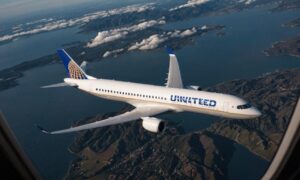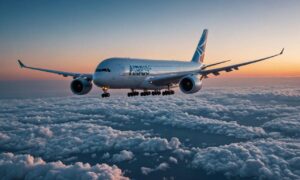Ensuring the safety and airworthiness of an aircraft is paramount in aviation. Part of this process involves adhering to scheduled inspections, including the annual inspection, which plays a crucial role in maintaining the integrity of an aircraft. In this comprehensive guide, we delve into the intricacies of when an aircraft annual inspection is due and why it is essential for the safety of passengers and crew.
Understanding the Importance of Annual Inspections
An annual inspection is a comprehensive examination mandated by aviation regulatory authorities such as the Federal Aviation Administration (FAA) in the United States. It involves a thorough assessment of various components and systems of an aircraft to ensure they meet safety standards and are in proper working condition.
Unlike routine maintenance checks, which may occur more frequently and focus on specific areas, an annual inspection provides a holistic evaluation of the entire aircraft. This includes the airframe, powerplant, avionics, controls, and other critical systems.
Regulatory Requirements
Aviation regulatory bodies, such as the FAA, stipulate specific guidelines regarding the timing and conduct of annual inspections. According to FAA regulations, most aircraft must undergo an annual inspection within the preceding 12 calendar months to remain airworthy.
It’s essential to consult the regulatory requirements applicable to your region or jurisdiction, as they may vary based on factors such as aircraft type, usage, and certification category.
Scheduling Considerations
Proper planning and scheduling are key aspects of ensuring timely annual inspections. Aircraft owners and operators must factor in various considerations when determining the optimal timing for these inspections.
Factors influencing the scheduling of annual inspections may include:
- Operating hours or flight cycles since the last inspection
- Seasonal considerations and peak operational periods
- Availability of maintenance facilities and personnel
Documentation and Compliance
Comprehensive documentation is integral to the annual inspection process. Aircraft owners and operators must maintain detailed records of inspections, repairs, and maintenance activities to demonstrate compliance with regulatory requirements.
Documentation typically includes:
- Inspection reports
- Maintenance logs
- Service bulletins and airworthiness directives
Consequences of Non-Compliance
Failure to adhere to annual inspection requirements can have serious consequences, including:
- Regulatory fines and penalties
- Loss of aircraft certification
- Compromised safety and airworthiness
- Legal liability in the event of accidents or incidents
Therefore, it is imperative for aircraft owners and operators to prioritize compliance with annual inspection mandates.
In conclusion, the timing of an aircraft annual inspection is determined by regulatory requirements and operational considerations. By adhering to scheduled inspections and maintaining meticulous documentation, aircraft owners and operators can ensure the safety, airworthiness, and regulatory compliance of their aircraft. Prioritizing annual inspections is essential for fostering a culture of safety and upholding industry standards in aviation.
Frequency of Maintenance Checks
Aside from annual inspections, aircraft maintenance involves various routine checks to ensure ongoing airworthiness. These checks might include:
- 100-hour inspections for certain aircraft
- Progressive inspections spread throughout the year
- Checks after significant repairs or modifications
100-Hour Inspections
For aircraft engaged in commercial operations or used for hire, the FAA mandates 100-hour inspections. These inspections are akin to annual inspections but occur more frequently based on flight hours.
They involve a detailed examination of critical components and systems to maintain safety and compliance.
Progressive Inspections
Some maintenance programs adopt progressive inspection schedules. Instead of one comprehensive annual check, these programs divide inspections into smaller, more frequent checks.
Progressive inspections allow for ongoing monitoring and maintenance, potentially identifying issues before they escalate.
Frequently Asked Questions
Here are some commonly asked questions regarding aircraft annual inspections:
| Question | Answer |
|---|---|
| Can annual inspections be conducted by any certified mechanic? | No, annual inspections must be conducted by an FAA-certified mechanic with inspection authorization (IA). |
| Is there a grace period for conducting annual inspections? | No, annual inspections must be completed within the preceding 12 calendar months to maintain airworthiness. |
| What happens if an aircraft fails its annual inspection? | If an aircraft fails its annual inspection, necessary repairs must be made to address deficiencies before the aircraft can be considered airworthy. |
Conclusion
Comprehensive maintenance, including annual inspections, is fundamental to aviation safety. By adhering to regulatory requirements and implementing robust maintenance practices, aircraft owners and operators uphold the highest standards of safety and airworthiness.






